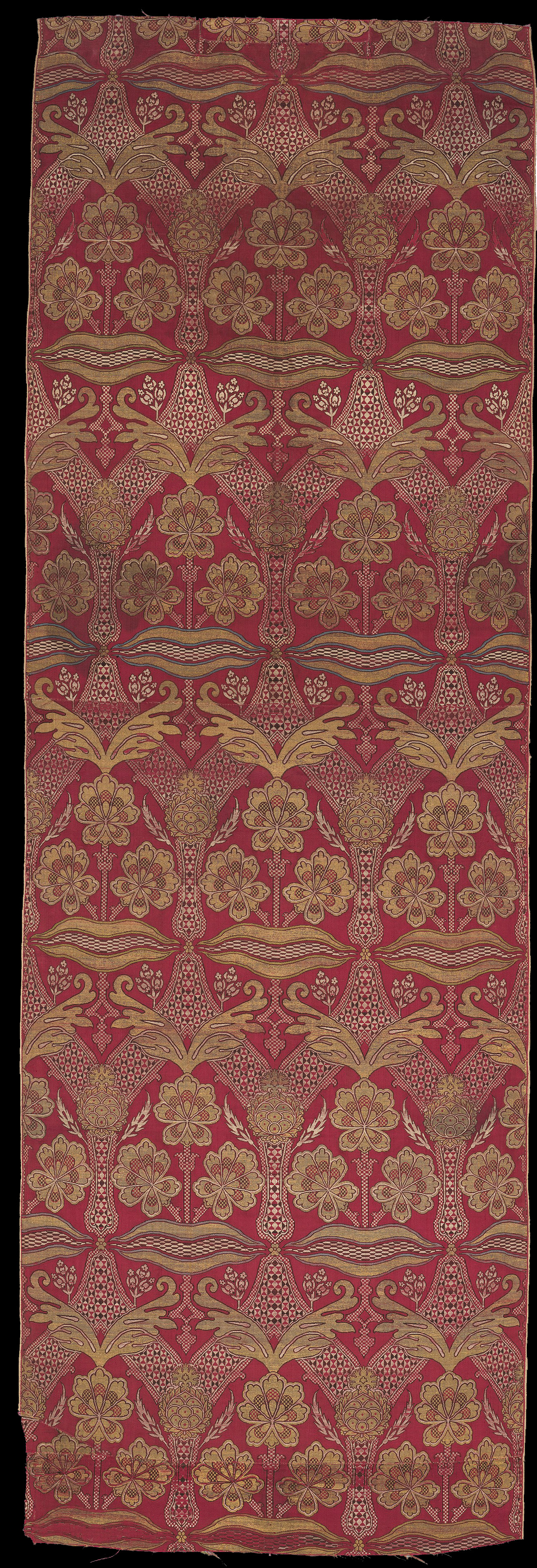|
Loom Width with Serrated Leaf Design
Object Name: Fragment
Date: ca.
1600–1625
Geography: Turkey, Bursa
Culture: Islamic
Medium: Silk,
metal wrapped thread; lampas (kemha)
Dimensions: Textile: H. 63 1/2 in.
(161.3 cm) W. 26 13/16 in. (68.1 cm) Mount: H. 67 5/8 in. (171.8 cm) W. 30
5/8 in. (77.8 cm) D. 1 13/16 in. (4.6 cm)
Classification:
Textiles-Woven
Credit Line: Purchase, Joseph Pulitzer Bequest, 1952
Accession Number: 52.20.17
The Metropolitan Museum of Art, New York
This lampas-woven fragment features large-scale leaves executed in the
saz style, named after the feathery saz leaf. Popularized throughout
Ottoman arts by the Iranian émigré and court painter, Shah Qulu, during
the reign of Süleyman the Magnificent (1520–66), the saz style found its
way from the reed pen of the painters at the royal nakkaşhane (workshop)
into contemporary textile design. In this case, this new artistic
aesthetic is characterized by central motifs with serrated edges outlined
in a contrasting color. The lampas (kemha) weaving technique incorporates
contrasting weave structures with two warps in different colors, creating
solid areas of color on the surface of the cloth by floating the
unincorporated warp threads in the back. |

